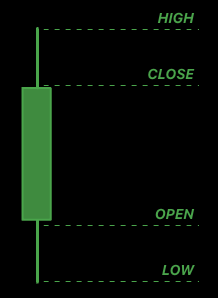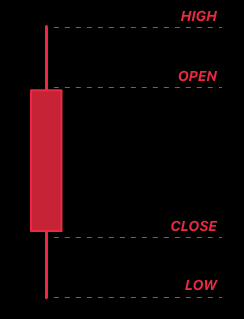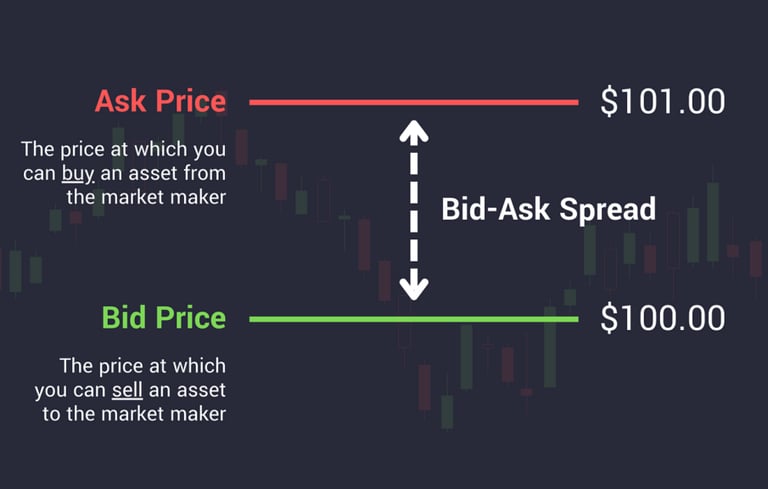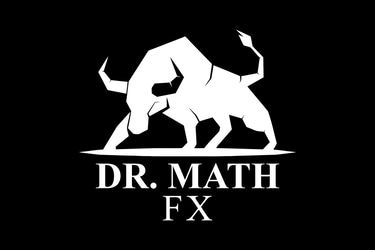

Candlestick


Candlestick charts are one of the most widely used tools in trading because they visually show how price moves within a specific time frame. Each “candlestick” provides four key pieces of information:
Open – the price at which the candle started.
Close – the price at which the candle ended.
High – the highest price reached during that period.
Low – the lowest price reached during that period.
Structure of a Candlestick
Body – the rectangle between the open and close prices. A green (or white) body usually means the price closed higher than it opened (bullish), while a red (or black) body means it closed lower (bearish).
Wicks (or Shadows) – the thin lines above and below the body show the high and low of that time period.
Why Traders Use Candlestick ?
ChartsCandlestick patterns help traders understand market sentiment. For example:
Long green candles indicate strong buying pressure.
Long red candles indicate strong selling pressure.
Small bodies (Doji candles) suggest indecision in the market.
Example:If you look at a 15-minute candlestick chart, each candle represents 15 minutes of price action. A day’s trading session would then be shown as multiple candles, making it easier to spot trends, reversals, or consolidation zones.
Bid, Ask and Spread


When you trade forex or any financial market, you’ll always see two prices: the Bid and the Ask. Understanding these is essential, as they directly affect your entry, exit, and transaction costs.
Bid Price:
The Bid is the price at which the market (or your broker) is willing to buy a currency pair from you.
In simple terms, if you want to sell, you’ll do so at the Bid price.
Ask Price:
The Ask (or Offer) is the price at which the market (or your broker) is willing to sell the currency pair to you.
If you want to buy, you’ll do so at the Ask price.
Spread:
The Spread is the difference between the Ask and the Bid price.
It’s essentially the cost of the trade and how brokers (especially in forex) earn money.
Example:
EUR/USD Bid = 1.1050
EUR/USD Ask = 1.1052
Spread = 2 pips
Why It Matters:
Tight spreads (e.g., 0.5 – 1 pip) are better for traders because transaction costs are lower.
Wider spreads (e.g., during news events or low-liquidity times) mean higher trading costs.
Dr.MathFx
Elevate your trading with expert guidance today.
Copyright © 2025 DR.MATH FX. All rights reserved.
